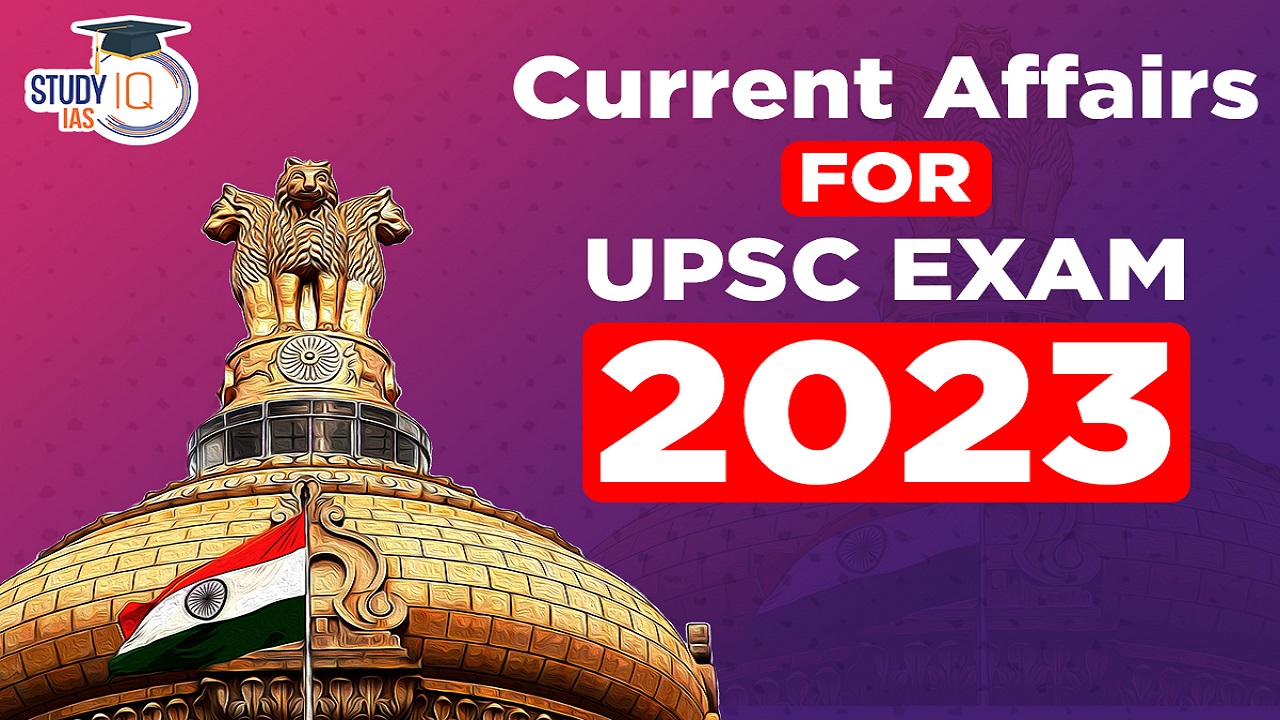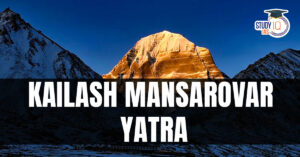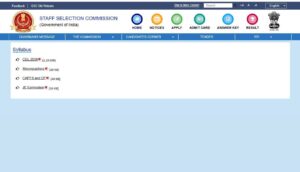Current Affairs 26th July 2023 for UPSC Prelims Exam
Full Reserve Banking
Context: Under ‘Full Reserve Banking System’, the banks are prohibited from creating loans without actual cash in their vaults to back these loans.
What is Full Reserve Banking?
- Full-reserve banking, also known as 100% reserve banking, is a banking system in which banks are required to hold 100% of their customers’ demand deposits in reserve.
- A demand deposit is money deposited into a bank account with funds that can be withdrawn on-demand at any time.
- Under this system, banks are not allowed to use customers’ deposits to make loans or investments.
- Instead, they act solely as custodians, holding the deposits securely in their vaults and charging a fee for this service.
Advantages of Full-Reserve Banking
- Stability and Reduced Risk: With 100% reserve backing, there is no risk of a bank run since the bank will always have enough physical cash to meet all withdrawal demands. This enhances the stability of the banking system and reduces the fear of a financial crisis due to sudden deposit withdrawals.
- Prevents Fractional Reserve Risks: Full-reserve banking eliminates the risks associated with fractional reserve banking, where banks create money through lending without holding adequate reserves. This prevents the possibility of banks’ lending out more money than they actually possess, reducing the potential for economic bubbles and financial instability.
- Fractional-reserve banking is the system of banking that is commonly used in modern economies.
- Under this system, banks are required to hold only a fraction of their customers’ deposits as reserves and are allowed to lend out the remainder to borrowers.
- The fraction of deposits that banks must keep in reserve is determined by the reserve requirement set by the central bank.
- Clearer Money Supply Control: In a full-reserve system, banks cannot create money out of thin air, resulting in a more stable and predictable money supply. This can prevent inflationary pressures caused by excessive money creation.
Disadvantages of Full-Reserve Banking
- Reduced Lending: It could lead to a reduction in lending since banks can only lend money that they receive as time deposits. This may limit the availability of credit for businesses and individuals, potentially slowing down economic growth.
- Opportunity Cost: Banks earn profits by lending out customers’ deposits and charging higher interest rates than they pay on deposits. In a full-reserve system, banks would not be able to earn as much from interest income, which could impact their profitability.
Current Affairs 25th July 2023 for UPSC Prelims Exam
UNESCO
Context: U.S. first lady Jill Biden attended a flag-raising ceremony at UNESCO in Paris, marking Washington’s official re-entry into the U.N. agency after a controversial five-year hiatus.
More on News
- The United States had announced its intention to rejoin UNESCO in June 2023.
- UNESCO’s member states have voted to approve the U.S. reentry.
About United Nations Educational, Scientific and Cultural Organization (UNESCO)
- Definition: The United Nations Educational, Scientific and Cultural Organization (UNESCO) is a specialised agency of the United Nations (UN).
- UNESCO was founded in 1945 as the successor to the League of Nations’ International Committee on Intellectual Cooperation.
- India has been a member of the UNESCO since its inception.
- Aim:
- UNESCO’s mission is to contribute to the building of a culture of peace, the eradication of poverty, sustainable development and intercultural dialogue through:
- Education
- Science
- Culture
- Communication
- Information.
- UNESCO’s programmes contribute to the achievement of the Sustainable Development Goals defined in the 2030 Agenda, adopted by the UN General Assembly in 2015.
- It also addresses emerging social and ethical challenges.
- UNESCO is known for its World Heritage Mission which encourages world countries to protect Natural and Cultural Heritage sites.
- UNESCO also leads the Man and Biosphere Programme for protecting Biosphere reserves across the world.
- 12 of the eighteen India’s biosphere reserves are a part of the World Network of Biosphere Reserves, based on the UNESCO Man and the Biosphere (MAB) Programme list.
- Panna Biosphere Reserve (Madhya Pradesh) is the latest inclusion in this list.
- UNESCO’s mission is to contribute to the building of a culture of peace, the eradication of poverty, sustainable development and intercultural dialogue through:
- Members: UNESCO has 195 Members and 8 Associate Members.
- Governance: It is governed by the General Conference and the Executive Board.
- The Secretariat, headed by the Director-General, implements the decisions of these two bodies.
- Headquarters: Paris.
Procedure for the Inclusion in SC/ST List
Context: The Union Social Justice Ministry has introduced the Constitution (Scheduled Castes) Order (Amendment) Bill, 2023 in the Lok Sabha to add two synonyms for the Mahar community in Chhattisgarh to the State’s Scheduled Castes list.
More on News
- The recently introduced Bill adds “Mahara” and “Mahra” as synonyms of the Mahar community, thereby expanding government schemes and benefits meant for SCs in the State to around two lakh more people.
- Currently, over 12% of Chhattisgarh’s population is categorised as Scheduled Caste.
Procedure for the Inclusion in SC/ST List
- Articles 341 and 342 of the Constitution of India define as to who would be Scheduled Castes and Scheduled Tribes with respect to any State or Union Territory.
- Criteria for Scheduled Castes (SC) Status: Extreme social, educational and economic backwardness arising out of traditional practice of untouchability.
- Criteria for Scheduled Tribes(STs): Indication of primitive traits, distinctive culture, geographical isolation, shyness of contact with community at large and backwardness.
- The Process of Inclusion in the SC/ST List:
- The process of adding communities to the ST/SC list starts with a recommendation from the State governments or Union Territory.
- It is sent to the Tribal Affairs Ministry, which reviews and sends them to the Registrar General of India, Under the Home Ministry for approval.
- After approval, it is sent to the National Commission for Scheduled Tribes or National Commission for Scheduled Castes and then sent to the Cabinet for a final decision.
- Once the cabinet finalizes it, then it introduces a bill in the parliament to amend the Constitution (Scheduled Castes) Order, 1950, and the Constitution (Scheduled Tribes) Order, 1950.
- After the amendment bill is passed by both the Lok Sabha and Rajya Sabha, the President’s office takes the final decision under Articles 341 and 342 of the Constitution:
- Benefits in the Inclusion in the SC/ST List:
- Some of the major benefits include post-matric scholarship, overseas scholarship and the national fellowship, besides education, concessional loans from the National Scheduled Tribes Finance and Development Corporation, and hostels for students.
- In addition, they will also be entitled to benefits of reservation in services and admission to educational institutions as per the government policy.
About Mahar Community
- Mahars chiefly belong to Maharashtra but they are also spread in other States like Andhra Pradesh, Rajasthan, Gujarat, Chhattisgarh, etc.
- In the early 1980s, the Mahar community was believed to constitute about 9% of the total population of Maharashtra—by far the largest, most widespread, and most important of all the region’s officially designated Scheduled Castes.
- The Mahars were unified by the eminent leader Bhimrao Ramji Ambedkar, who urged them to militant political consciousness and to great educational improvement.
Deep Sea Mining & International Seabed Authority
Context: The International Seabed Authority’s member nations agreed on a two-year road map for the adoption of deep-sea mining regulations. The ISA was trying to make rules for the exploitation of nickel, cobalt and copper in deep seabed areas outside national jurisdictions.
About Deep-sea Mining
- Deep-sea mining is the process of retrieving mineral deposits from the deep seabed – the ocean below 200m.
- The deep seabed is the seabed at ocean depths greater than 200m, and covers about two-thirds of the total seafloor.
- The deep sea is a full of biodiversity, rich in living resources used in medicines and critical in regulating the climate and providing spawning and feeding grounds for fish.
- Seabed mining is done through a huge vacuum that simply travels over the ocean floor to suck up the nodules which are then brought to the surface with a hose.
About International Seabed Authority
- Definition: The International Seabed Authority (ISA) is an autonomous international organization established under the 1982 United Nations Convention on the Law of the Sea (UNCLOS).
- ISA became operational as an autonomous international institution in June 1996.
- Aim: ISA is the institution through which Parties to UNCLOS design and control all the mineral-related resources activities in the area.
- The main activity of ISA is to regulate the exploration of poly-metallic nodules.
- The ISA considers applications for exploration and exploitation of deepsea resources from contractors, assesses environmental impact assessments and supervises mining activities in the ‘Area’.
- Members: ISA has 169 members, including the European Union.
- India is a member of ISA.
- Headquarters: Kingston, Jamaica


 Kailash Mansarovar Yatra to Resume Soon,...
Kailash Mansarovar Yatra to Resume Soon,...
 What is Tensor Processing Unit (TPU)?
What is Tensor Processing Unit (TPU)?
 SSC CGL Syllabus 2025 for Tier 1 and Tie...
SSC CGL Syllabus 2025 for Tier 1 and Tie...





















